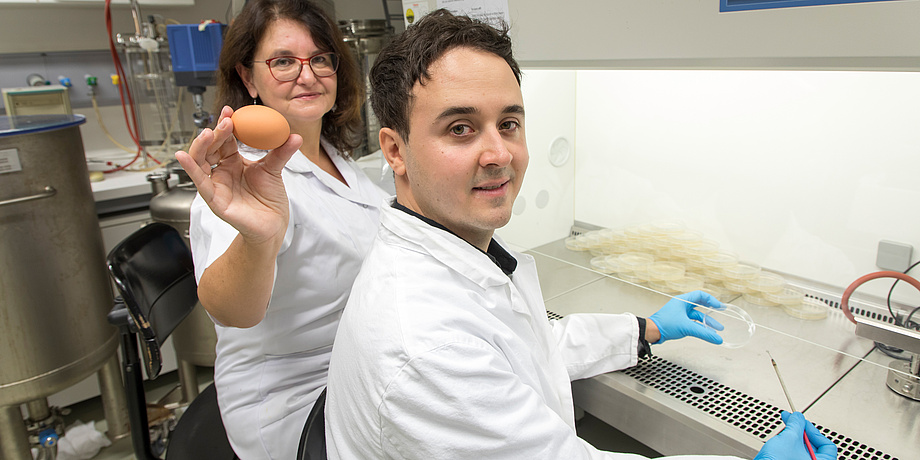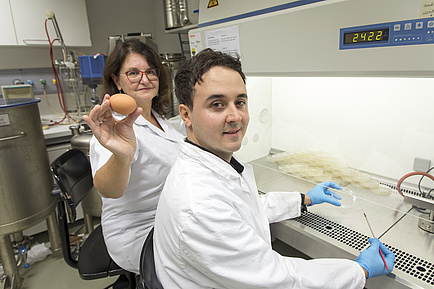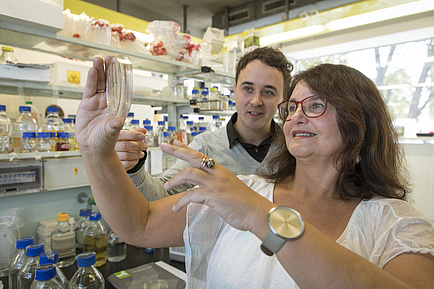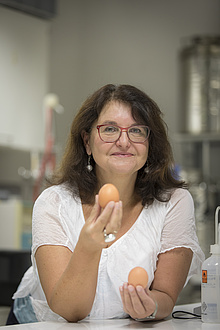The eggs – just the hatching eggs, not those for direct consumption – are subjected to formaldehyde fumigation, something which local residents in the vicinity of the hatcheries cannot fail to notice. “Formaldehyde evaporates quickly and you can’t control it completely in large-scale hatcheries – some gas always escapes,” says Tomislav Cernava from the Institute for Environmental Biotechnology of TU Graz. In addition to the carcinogenic and harmful environmental effects of formaldehyde, this is also a reason why the EU is frantically searching for an effective alternative for the treatment of hatching eggs.
Microorganisms as natural antagonists
A promising and eco-friendly option based on useful microorganisms has just been successfully tested by researchers at TU Graz, the Austrian Centre of Industrial Biotechnology (acib) and the biotech start-up Roombiotic on a pre-industrial laboratory scale. The results have just been published in the scientific journal Scientific Reports. The group from Graz came across the bacteria with antimicrobial effects in a precursor project in 2009. At the time, specific microorganisms which protect Styrian oil-seed pumpkins from rot were identified for the first time.“We continued to conduct research on the volatile substances of these bacteria to find out how they combat pathogens so effectively. We’ve now assessed the efficiency a few of them conducting microbiome analyses of the egg shells,” says Gabriele Berg, head of TU Graz’s Institute for Environmental Biotechnology. Bacteria producing pyrazines stood out in particular. When applied in pure form to the egg shells, pyrazines eliminated up to 99.6 percent of germs – a decontamination rate comparable to that of formaldehyde fumigation. The natural egg-shell microbiome is characterised by an unexpected bacterial diversity. “Interestingly, especially low pyrazine concentrations lead to a positive microbiome shift,” underlines Gabriele Berg.




